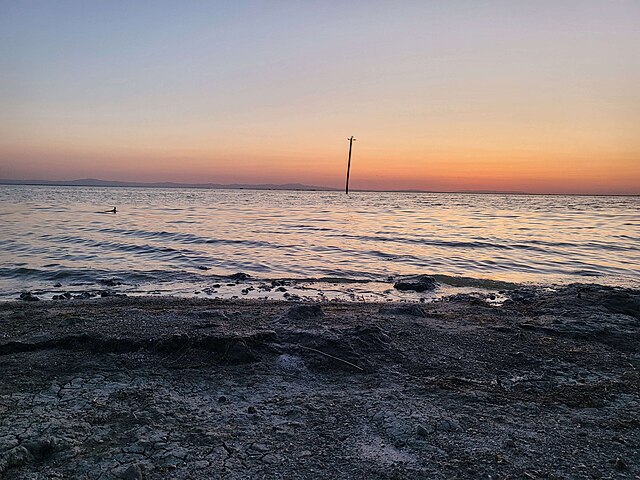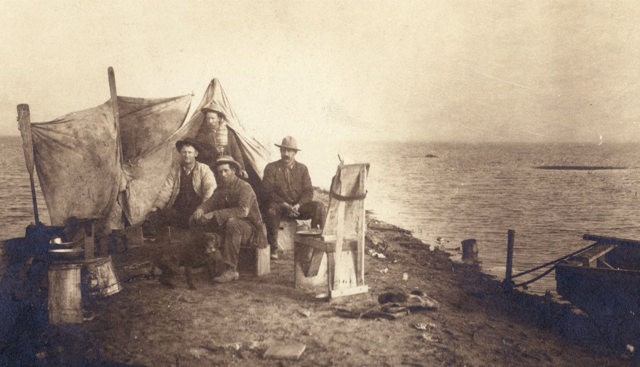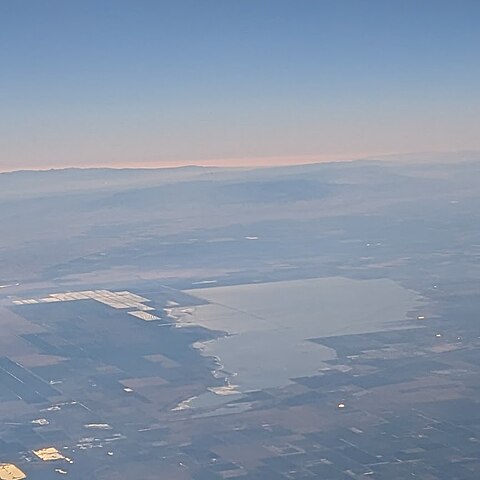 I’m sure you’ve heard of Lake Superior and Big Bear Lake, but have you heard of Tulare Lake?
I’m sure you’ve heard of Lake Superior and Big Bear Lake, but have you heard of Tulare Lake?
Tulare Lake has a long history in the state of California, and was once known as the “largest body of freshwater west of the Mississippi River”.
Unfortunately, it was drained for commercial reasons and has continually been pumped out for hundreds of years. But what led to its drainage, and can it be restored? Let’s find out!
History of Tulare Lake
Located in the San Joaquin Valley (SJV), Tulare Lake was once 100 miles long and 30 miles wide.
It was named after the tule reeds that surrounded its shore and was filled by rivers flowing down from the High Sierra Mountains. At times the lake overflowed its bounds and created a smaller offshoot lake to its south.
Tulare Lake is important to the Yokuts nation. Their name for the lake is “Pa’ashi”, meaning “big water”, and they believe their people were created from Tulare’s silt. The Yokuts depended on Pa’ashi for their livelihood and shared the basin with animal species like the burrowing owl, now listed as “vulnerable or imperiled” by the US Fish and Wildlife Service.
How Tulare Lake Disappeared
 The magnificent lake was gradually drained by California settlers who built irrigation canals to water arid land. They were granted ownership of the territory that they irrigated and planted.
The magnificent lake was gradually drained by California settlers who built irrigation canals to water arid land. They were granted ownership of the territory that they irrigated and planted.
To give an idea of the timeline, Tulare Lake was discovered by Spanish explorers in the late 1700s and was already completely drained by about 1890. That’s a speedy transition! The lake is tenacious though, and staged a comeback several times over the years - significantly in 1938 which led to the building of the Pine Flat Dam in 1954.
Despite all the measures used to prevent the lake’s return, it managed to “flood” in 2023 thanks to heavy winter snow and several atmospheric rivers. Unfortunately, aggressive water diversion and evaporation caused it to almost completely dry up again.
Conflict Over Tulare Lake
 Many in the agricultural community advocate draining Tulare Lake.
Many in the agricultural community advocate draining Tulare Lake.
Farmers want to continue growing crops like cotton, pistachios, and tomatoes, and keep raising livestock because the region supplies roughly ¼ of the US food supply. They cite the millions of dollars in lost crops, displacement of thousands of cattle, and their homes being flooded as reasons to suppress lake formation.
However, others support the idea of preserving the lake to restore the area to its natural form. With Pa’ashi’s return, the Yokut enjoyed their ancestral grounds again, and so did multiple species of waterfowl, amphibians, and various kinds of fish.
Another reason for restoring Pa’ashi is to replenish the underground aquifers in the Tulare Basin, thereby alleviating drought. For more information about groundwater problems in the West, see this article.
Challenges Ahead
The Tulare Basin has faced many challenges, and over-pumping of aquifers has plagued the SJV for decades.
Over-pumping is so severe that the State of California placed several groundwater agencies in Kings County on probation for using excessive amounts of groundwater and causing well outages. Probation will cause the agencies to pay millions of dollars in fines and could lead to state-appointed regulators controlling groundwater usage.
However the future takes shape, Vivian Underhill, a Tulare Lake researcher said it well - “this landscape has always been one of lakes and wetlands, and our current irrigated agriculture is just a century-long blip in this larger geologic history.”
Let’s hope better management of our resources prevails!
Sources: NBC, Newsweek, Guardian, Fast Company, CalMatters, USGS.gov, Northeastern.edu, sarahamooneymuseum.org







